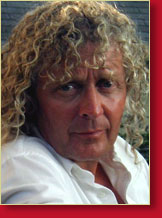
|
About Paul
I love to hear writers and musicians and
painters and actors tell the stories of how they  discovered
their passion for expression. Mine came one evening when I was
seventeen years old, when I read the words "...And I walked
back to the hotel in the rain." discovered
their passion for expression. Mine came one evening when I was
seventeen years old, when I read the words "...And I walked
back to the hotel in the rain."
This is the final line in Ernest Hemingway's A
Farewell to Arms. I was stunned. I knew at that moment,
that I wanted to be a writer. Or rather, I wanted to be Ernest
Hemingway. I had no idea what that might entail, but I certainly
had no intention of being Paul VanDevelder.
Nothing could have been farther from my mind that
night than spending my life as Paul VanDevelder. I wasted no time
becoming Ernest Hemingway. I took out a sheet of paper and started
writing. That very evening. It only took writing every day, for
the next five years, to learn that I had nothing to say. On the
other hand, I learned to say nothing very well. I spent hours each
day learning what James Joyce called "the sound of shape and
the shape of sound," what Hemingway himself called "the
plumbing" of written language. But I must have had something
to say, a smidgen of experience worthy of my artistic aspiration.
At the ripe old age of 25, I won a prestigious award from the National
Endowment of the Arts for a story entitled "Crysallis." Agents
wrote me and made dizzying offers for representation, promising
lucrative contracts. The phone rang with congratulations from friends
and family. I was dizzy with fame.
The celebratory hangover lasted 10 years. I wanted
so badly to write, but just as strong was the silent conviction
in me that I didn't have anything momentous to report to the world.
Either I had nothing to say, or I didn't know how to say it. I
wasn't ready. So! Now what?
Good fortune smiled on me at birth. Both of my parents
were teachers. My earliest memories are strewn with books. Those
memories seem to acquire real edges, colors and shapes, in a small
village in Bolivia, where I lived as a boy. Regardless of where
we lived, whether in Bolivia or Mexico City or Washington D.C.,
my parents saw to it that the life of the spirit and the mind formed
the gravitational center of our family. Their children all grew
up to become artists and teachers. My father is a hermeneutical
scholar, and my mother, the first-born child of a Tennessee coal
miner and his Irish/Cherokee bride, overcame the inertia of childhood
to become a gifted, and much loved, teacher of literature. Faulkner,
Cather, Twain, and Steinbeck, O'Connor, Emerson, and Thoreau, animated
the very air that filled our house.
In Ivan Doig's extraordinary memoir, This House
of Sky, he tells of harvesting wheat on the Montana high-line
the summer after he graduated from high school, and seeing a
stranger walking toward him across the freshly cut field. Nathaniel
Blumberg, the dean of the School of Journalism at the University
of Montana, had driven two hundred and fifty miles to recruit
the young Doig for college. Fifteen years later, as I was recovering
from the celebration of my brief fame, Nathaniel Blumberg would
do the same for me. After he made his pitch, I knew this was
my answer. I enrolled in journalism school following quarter.
I was in for the surprise of my life. There, I discovered the
raw power of visual language, as it is captured in the mystical
alchemy of the silver nitrate and ground glass. I discovered
the power of the camera.
For the next twelve years, covering everything from
conflicts in Central America to presidential campaigns, natural
disasters and manmade holocausts, I burned more than a half a million
rolls of film. It was the camera that taught me how me how to tell
a story, and it was the discipline of writing cutlines, thousands
upon thousands of cutlines, on deadline, that taught me the nuts
and bolts of the craft of writing. Only the senior editors at National
Geographic write the captions, or cutlines, and that is no
accident.
By 1990, after covering thousands of assignments
and news events, I was ready to work without a net. I had no idea
where that highwire might take me, but I wasn't worried. Questions
that taunted me years had been silenced. Now, I had loads of raw
material, a honed craft, and enough fear to keep me hungry and
motivated. Mark Twain once said that he left home at the age of
16, thinking his father to be the dumbest man God had put on the
earth. When he returned to Hannibal for a visit five years later,
he was amazed at how much the old man had learned.
The world of daily (and monthly) journalism had been
a tough, exacting training ground. It was heartless, thrilling,
brutal, relentless. I loved it. The world was my classroom and
everyday was filled with lessons. But there were bigger stories
out there, stories that seemed only to begin where newspapers and
magazines left off, and the time had come to tell them.
But where to begin? Ah, now there's a question. What
the ancient ones tell us is true. The crossing is worth the storm.
But there is one little catch. You can't see the far side until
you leap.
Without even knowing it, I started the research on Coyote
Warrior in 1993. At the request of Sierra Magazine I
began investigating the conflict between the extraction industry
(fossil fuels, timber, mining) and Native American tribes. To
my amazement, there were fierce conflicts in Wisconsin, Arizona,
Alaska, California, New Mexico, to name a few, but mainstream
magazines were not covering these stories. Simultaneously, the
emerging issue of "environmental justice" had moved
to center stage in the political arena. The Internet was so new
that almost none of the tribes or Native environmental groups
had ventured into cyberspace. That has changed, dramatically.
Today, hundreds of tribes and tribal organizations have developed
sophisticated web sites. I have used many of these, at one time
or, for tracking down an individual, or a piece of information.
Type any of following into Google, and the sites themselves will
give you hyperlinks to many others.
The
Indigenous Environmental Network
International
Indian Treaty Council
Dineh C.A.R.E.
Seventh Generation
Fund
Native American Journalist
Association
National
Congress of American Indians
Native American
Rights Fund
Sierra
Audubon
discoverlewisandclark.org
Three
Affiliated Tribes
White
Earth Land Recovery Project
Indian
Country Today
TheNativePress.com
American
Rivers
Elouise
Cobell
Native American Studies
We all have our favorite books, whether or not they
happen to be related to the story you are currently working on.
When I travel away from home, there are a couple I take with me
for inspiration, amusement, or for the simple beauty and power
of the language:
Dispatches, by Michael Herr, Collected
Poems of Richard Hugo, Nobody's Angel, by Thomas
McGuane, and John Nichol's The Milagro Beanfield War.
If I could name four books that prepared me for writing Coyote
Warrior, they would be Robert William's extraordinary treatise, The
American Indian in Western Legal Thought, John McPhee's
timeless portrait of David Brower, Encounters with the Archdruid,
David Herbert Donald's Lincoln, and David Abram's Spell
of the Sensuous.
Favorite web sites:
http://www.wildsalmon.org/about
Back to top
|

|





